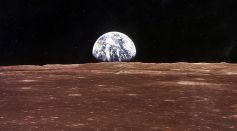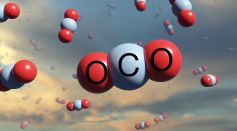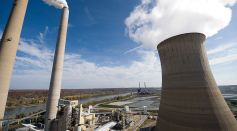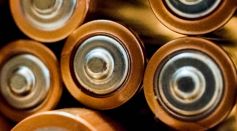Tags: Carbon

Carbon Fiber Bikes Taking Over the Cycling Industry: Here's What You Need to Know About the Ubiquitous Material

Red Giant Star V Hydrae's 6 Mysterious Smoking Rings Contain Carbon, Researchers Say

Florida Ponds Creating an Ecosystem 'Disservice’ As It Lose More Carbon Through Gas

How Did Former 'Fireball' Earth Become Habitable? Researchers Explain Mystery

Novel Catalyst Can Turn Carbon Dioxide Into Gasoline 1,000 Times More Efficiently Than Existing Methods

Innovative New Vertical LED Grow System Slashes Cost While Boosting ROI for Indoor Growers

Carbon Capture Storage Powered By Hydrogen Extracts 99% CO2 At a Rate of 2 Liters Of Air Per Minute

Larger Biodiversity Still Hidden in Deep Seafloor, May Have Part in Regulating Global Climate

Environmental Cost of Astronomy Needs to Be Reduced, Will the World's Most Sustainable Observatory Solve It?

Evidence of Life on Mars Remains Mysterious Until Martian Rock Sample From NASA Curiosity Rover Will Be Analyzed

Sumitomo SHI FW and Vantaa Energy Reduce Environmental Impact of Energy Production with the Help of Artificial Intelligence

NASA Mars Curiosity Rover Finds Carbon On Red Planet; What Does It Mean?
Converting Solid Biomass to Natural Gas Now Made More Efficient to Reduce Carbon Footprint

Comparable Information on Carbon Sequestration in Forests Around the World

Researchers Synthesized Paracrystalline Diamond That is Less Fragile Than the Hardest Known Material on Earth
Carbon Arctic Cycle: Further Insight on How This Element is Transferred Between Land, Atmosphere and Ocean Unveiled

Particle Refinement Boosts Sodium/Lithium-Ion Batteries By Inducing and Increasing Cycle Capacity

Carbon Cycling: Researchers Use Microbes to Determine Vital Role of Oceans

Will Carbon Finally Go to Space? Researchers Created Heat Resistant Composites to be Tested on US Navy Rocket
New Form of Carbon Only One Atom Thick, Ideal for Future Electronics, High-Tech Engineering
Most Popular

Memory and Learning: How the Brain Stores, Retrieves, and Forgets Information

Gut Microbiome 101: How Gut Bacteria Influence Immunity, Mood, and Metabolism

How Solar Activity Shapes Our Planet: What the Next Solar Maximum Means for Earth

Antibiotic Resistance: How It Develops and Why Misuse of Antibiotics Is Dangerous





